A Definitive Local SEO Framework For Restaurant Chains & Multi-location Brands
Managing SEO for one restaurant is hard enough. Doing it across ten, twenty, or a hundred locations requires a playbook — not guesswork.
This guide breaks down exactly how to build a scalable local SEO system for restaurant brands. You’ll learn how to optimize every Google Business Profile, structure high-performing location pages, generate consistent reviews, and create AI-search-ready content that ranks in Google, Maps, and ChatGPT-style answers alike.
At The Digital Restaurant, we’ve helped multi-location operators nationwide achieve top-3 rankings and measurable increases in calls, direction requests, and online orders. Whether you manage a fast-casual chain or a fine-dining group, this playbook will show you how to win local search at scale — and prove ROI for every location.
The 2026 Local SEO Landscape
Search has changed dramatically in the past two years. Google’s AI Overviews, new Maps ranking factors, and the rise of ChatGPT- and Perplexity-powered answers have redefined how diners discover restaurants nearby. For multi-location restaurant brands, this means visibility is no longer just about having a listing — it’s about owning every local touchpoint where hungry customers look for your cuisine.
In 2026, Local SEO success is built on three pillars:
🔹 Relevance
Google and AI systems must clearly understand who you are, what you serve, and where each location operates. This depends on structured data, consistent brand entities, and well-optimized location pages that describe local offerings and context.
🔹 Distance (Proximity)
Search engines still prioritize what’s closest to the user — but proximity signals now include delivery zones, map coverage, and even user behavioral data like direction requests and click-to-call activity.
🔹 Prominence
Reviews, media coverage, backlinks, and social signals define brand authority. Restaurants with active local engagement (reviews, posts, photos, UGC) and consistent mentions across the web rank higher in both Google Maps and AI results.
What’s new in 2026
- AI Overviews & LLM results mean your restaurant may appear in conversational answers even before a map pack — if your data is structured and credible.
- Entity SEO matters: Google connects brand → location → menu items → review sentiment.
- GBP activity (posts, responses, and content freshness) directly correlates with visibility.
- Page experience & load speed (Core Web Vitals) remain baseline requirements — fast, mobile-friendly sites outperform slow builders.
- Review signals now extend to tone and frequency, not just average rating.
Why this matters for multi-location brands
Managing SEO for one location is tactical; managing ten or more is operational. To succeed, your system must:
- Maintain consistent brand data (NAP, schema, menu links) across every platform.
- Automate repetitive tasks like GBP updates, reviews, and photo posts.
- Track local performance metrics per city or region.
That’s where a structured framework — like this playbook — helps transform scattered SEO efforts into a scalable growth engine.
1. Location Page Architecture That Scales
Managing SEO for multiple restaurant locations isn’t just about duplicating pages on the restaurant website — it’s about creating a scalable structure where each location page ranks independently while still reinforcing your overall brand authority.
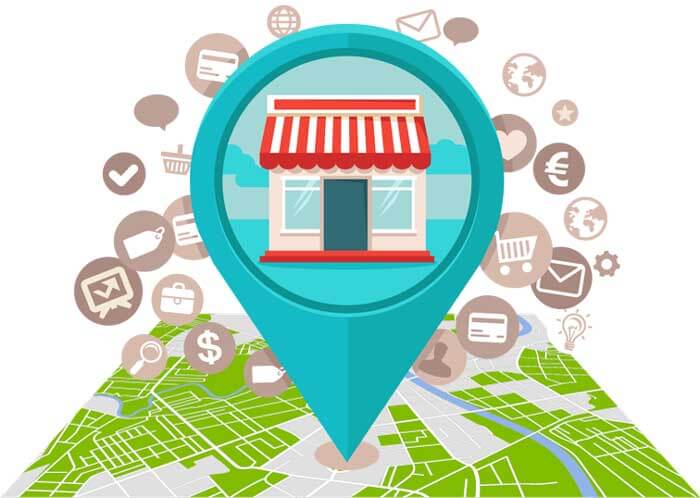
Why Architecture Matters
Most restaurant chains lose local visibility because they rely on a single “Locations” page or use cookie-cutter pages with identical content.
Google wants to see unique local relevance — individual pages that clearly describe each restaurant’s details, local area, and customer experience.
The right architecture helps search engines understand that these pages belong to one brand but serve distinct search intents (“sushi in Naperville,” “hibachi near Schaumburg,” etc.).
Recommended URL Structure
/locations/
├── chicago/
│ ├── shogun-chicago/
├── schaumburg/
│ ├── shogun-schaumburg/
└── naperville/
├── shogun-naperville/
- Keep URLs short, lowercase, hyphenated.
- Use city + brand/location naming for clarity.
- If you have sub-brands (e.g., Shogun Express), nest them logically.
Core Elements of Every Location Page
Each page should include all of the following (these are direct ranking and conversion factors):
| Element | Purpose | Example |
|---|---|---|
| Title Tag | Distinguish each page | `Shogun Japanese Steakhouse – Naperville, IL |
| H1 Heading | Human-friendly intro | “Welcome to Shogun Naperville” |
| Meta Description | Click-through incentive | “Dine-in, order online, or book hibachi tables at Shogun Naperville. Authentic sushi, steak & sake bar.” |
| Local Intro Paragraph | 300–500 words of unique copy about the area, menu highlights, and local context | Mention landmarks, neighborhood, specials, delivery radius |
| Google Map Embed | Reinforces geolocation | Use <iframe> with location coordinates |
| Address + Phone + Hours (NAP) | Core local SEO signal | Use consistent formatting across site & GBP |
| Menu & Ordering Buttons | Drive actions | “Order Online,” “Book Table,” “Call Now” |
| Photos/Videos | Visual proof of local identity | Team photo, storefront, local events |
| Reviews Widget | Adds E-E-A-T and trust | Pull latest Google reviews dynamically |
| FAQ Section | Captures long-tail & voice search | “Do you offer catering in Naperville?” |
| Schema Markup | Structured data for AI & Google | Restaurant schema Menu schema Review schema |
Managing all these elements for a single restaurant is straightforward. But when you have ten, twenty, or hundred locations — each needing unique content, menus, and schema — it quickly becomes overwhelming.
That’s where NGAZE.AI steps in, automating every part of your location page optimization process.
With NGAZE.AI, every core element of your restaurant’s location pages — SEO content, menus, reviews, FAQs, and schema markup — can be updated in one dashboard. No coding. No developer. No hassle!
Internal Linking Strategy
- From the main /locations/ hub → each store page.
- Each store page → nearby locations (“Also visit Shogun Schaumburg”).
- Blog posts (“Best Hibachi in Chicago Suburbs”) → relevant location pages.
- Footer: concise “Find a Location” link to hub.
This helps Google understand relationships among your stores and prevents keyword cannibalization.
Performance & UX Standards
- Core Web Vitals: 90+ Pagespeed score.
- Responsive design: Pages must render perfectly on mobile; 70–80 % of local searches happen on phones.
- Clear CTAs: Use sticky “Order Online” / “Call Now” buttons.
- Local images: Geotag filenames (e.g.,
shogun-naperville-interior.webp).
How NGAZE.AI Can Automate This
Inside NGAZE.AI, you can:
- Generate location pages with unique local copy, NAP, map embeds, and schema automatically.
- Sync Google Business Profile data to ensure accuracy across all pages.
- Track individual page performance (clicks, calls, direction requests).
2. Google Business Profile (GBP) Mastery
Your Google Business Profile is your restaurant’s most powerful local ranking asset.
It determines how often your locations appear in Maps, Local Pack, and even AI Overviews.
For multi-location brands, mastering GBP means building a repeatable system — one that keeps every profile accurate, active, and optimized at scale.
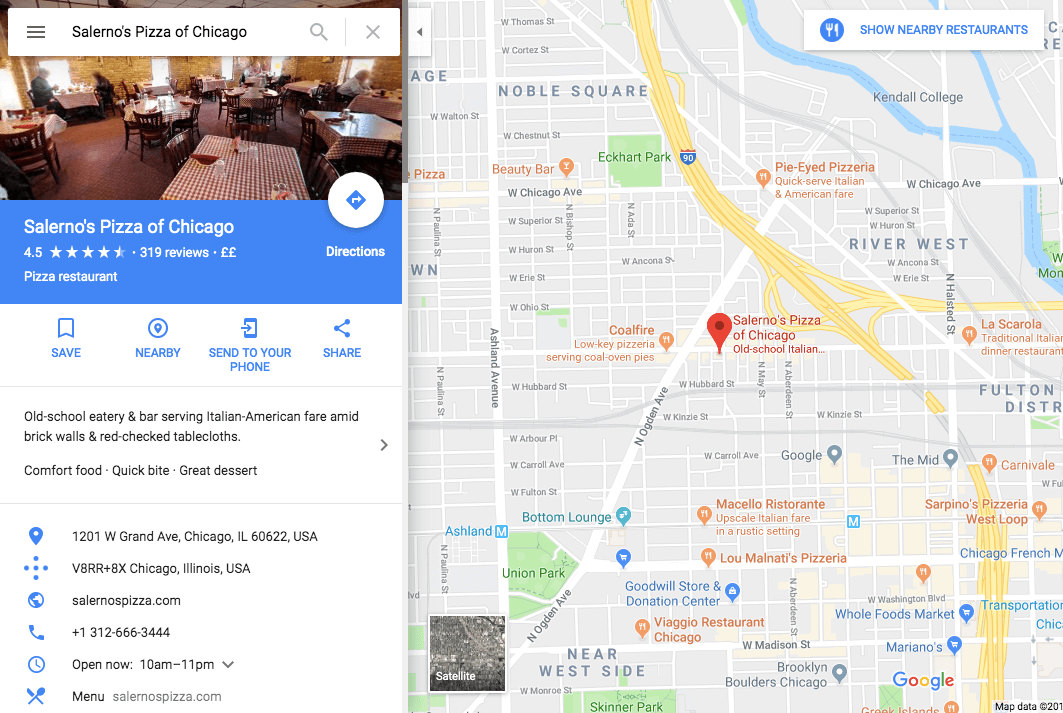
Why GBP Matters More Than Ever
- Over 65 % of restaurant searches start on Google Maps or mobile “near me” queries.
- Google now integrates AI Overviews and conversational snippets that source data directly from GBP, not your website.
- Active profiles (those posting photos, events, and updates) consistently rank higher in local results.
Every optimized profile sends Google the same message:
“This location is open, trusted, and exactly what searchers are looking for right now.”
GBP Optimization Checklist (Per Location)
🔲 Business Name
- Follow format: Brand Name + City (e.g., Shogun Naperville).
- Avoid keyword stuffing (“Shogun Naperville Best Sushi & Hibachi”).
- Keep consistent across every profile and website listing.
🔲 Categories
- Primary: Cuisine type or service (e.g., Japanese Restaurant, Pizza Restaurant, Steak House).
- Secondary: Takeout Restaurant, Delivery Service, Catering Service, etc.
- Review categories quarterly; Google adds new ones frequently.
🔲 Hours & Attributes
- Keep regular and holiday hours current — stale hours hurt rankings.
- Add attributes: “Dine-in,” “Takeout,” “Delivery,” “Outdoor seating,” “Wheelchair accessible,” “Online ordering.”
🔲 Photos & Videos
- Minimum 5 new photos per month per location.
- Upload a mix: exterior, interior, menu, dishes, team.
- Use descriptive filenames (e.g.,
shogun-naperville-sushi-roll.webp). - Add short 10–20 sec vertical clips — Google prioritizes visual content.
🔲 Google Posts
- Post weekly: promotions, new menu items, events, holidays.
- Use 1 image + 75–150 words + CTA (“Order Online,” “Reserve Table”).
- Expired posts still signal freshness — consistency matters.
🔲 Q&A & Messaging
- Seed common questions (“Do you offer gluten-free options?”) and answer them.
- Enable Messaging to capture real-time inquiries — respond within 1 hour.
- Monitor weekly; customers often post pre-visit questions.
🔲 Reviews & Responses
- Encourage every dine-in or online order to leave a Google review.
- Respond to all reviews (positive + negative) within 72 hours.
- Use your brand voice; thank customers by name; resolve issues politely.
- Consistent responses improve trust and ranking signals.
🔲 Links & Tracking
- Add direct links for:
- Order Online → POS or website ordering system
- Menu → live HTML menu, not PDF
- Reservations → OpenTable/Resy or site form
- Append UTM parameters for analytics (e.g.,
?utm_source=google&utm_medium=local&utm_campaign=gbp).
🔲 Service Areas & Maps
- For delivery-based restaurants, define radius-based service areas.
- Keep address hidden only if you don’t serve customers onsite (ghost kitchens).
- Embed Google Maps pin on each location page for reinforcement.
🔲 Profile Completeness & Consistency
- Achieve 100 % completion: business description, opening date, menu links, logos.
- Ensure all fields (NAP, categories, URLs) match your website & citations.
- Audit quarterly using a central GBP management sheet or API feed.
GBP Performance Metrics To Monitor
- Calls from profile
- Direction requests
- Website clicks (UTM tracked)
- Messages sent & response time
- Photo views vs competitors
- Review count & average rating trend
Pro tip: Track these metrics on NGAZE.AI to detect underperforming locations early.
Finally, you will need to verify each of these profiles. This can take a couple of weeks as Google will send out postcards to each address. Make sure the managers of each restaurant are aware that these are on the way so they don’t throw them out accidentally.
3. Review Generation & Brand Reputation Management
This section is critical for restaurants — reviews are both an SEO ranking signal and a customer trust factor.
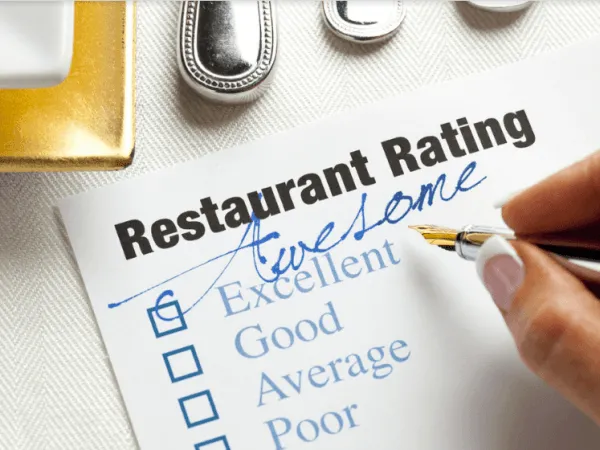
Why Reviews Matter More in 2026
In 2026, reviews do more than influence customer decisions — they directly impact visibility in Google Maps, AI Overviews, and even voice search results.
Google’s algorithms now analyze review quantity, recency, sentiment, and response quality as local ranking factors.
For multi-location restaurant brands, this makes reputation management both an SEO discipline and a brand trust imperative.
💬 “Your reviews aren’t just feedback — they’re fuel for local SEO visibility.”
The Review & Reputation Playbook
⭐ 1. Build a Consistent Review Pipeline
- After every dine-in or online order, send an automated review invite via text or email.
- Use QR codes on receipts, packaging, or table tents linking directly to the location’s Google review form.
- Keep links location-specific to avoid review dilution.
Example: “Thank you for visiting Shogun Naperville! We’d love your feedback — [Leave a Review on Google].”
💌 2. Diversify Review Platforms
- Google remains top priority (affects Maps & AI Overviews).
- Also collect reviews on Facebook, Yelp, and TripAdvisor to improve brand entity coverage.
- Use the same tone and response consistency across platforms.
🧠 3. Monitor Sentiment, Not Just Stars
- Track emerging themes: food quality, service speed, pricing, ambiance.
- Use sentiment analysis to spot trends (e.g., “slow service” across multiple locations).
- Aggregate feedback into monthly “Customer Sentiment Reports” — these reveal both marketing wins and operational pain points.
💬 4. Respond to Every Review
- Acknowledge every comment within 72 hours.
- Thank positive reviewers and address negatives with empathy and professionalism.
- Mention location specifics (“Thanks for visiting our Naperville restaurant!”) to reinforce local SEO context.
- Use consistent tone and sign-off:
“— The Shogun Team” or “— The Digital Restaurant Support Team”
Pro tip: Review responses are now indexed. Keywords you include (“sushi in Naperville”) can subtly reinforce local relevance.
⚙️ 5. Audit, Automate & Report
- Schedule monthly review audits to ensure steady velocity (Google loves recency).
- Use a central dashboard to monitor average ratings, response time, and review growth by location.
- Implement alerts for sudden rating drops or keyword spikes (e.g., “cold food”).
How NGAZE.AI Streamlines It
“With NGAZE.AI, review collection and responses become effortless. The platform automatically tracks reviews across Google, Yelp, and Facebook, flags negative sentiment, and even drafts personalized responses using your brand tone.”
NGAZE Review Features:
- 🧩 Unified review feed for all locations
- 🤖 AI-powered response assistant (“Bella”) trained on your voice
- 💌 Automated review request links & QR templates per location
- 📊 Sentiment insights and monthly performance trends
- 🔔 Alerts for 1–2 star reviews or brand-critical mentions
Key Takeaways
- Reviews = visibility, trust, and conversion.
- Response rate & tone are ranking factors.
- Automate review requests, but personalize responses.
- Use review data for marketing insights and local SEO reinforcement.
- Manage everything centrally through NGAZE for consistency.
4. Citations & Data Sync
This section is critical for restaurants — reviews are both an SEO ranking signal and a customer trust factor.
If Google Business Profiles are your visibility engine, then citations are the wiring that connects every location to the right search signals.
Citations are mentions of your business’s Name, Address, and Phone (NAP) across directories, map listings, social networks, and review platforms.
For restaurant brands, maintaining consistent NAP data across all of them is the difference between ranking cleanly or disappearing under duplicates.
Why Citations Still Matter in 2026
- Entity accuracy = trust. Search engines use citations to verify your business legitimacy and physical presence.
- AI and voice search depend on structured data consistency — if your address or hours differ across Yelp, Apple Maps, and GBP, AI systems may deprioritize your location.
- Inconsistent data can fragment reviews and confuse delivery partners like Uber Eats or DoorDash.
“Citations are your restaurant’s digital GPS — if they’re inconsistent, customers get lost.”
Core Citations Every Restaurant Brand Should Maintain
| Platform | Purpose | Update Frequency |
|---|---|---|
| Google Business Profile | Primary local visibility | Real-time |
| Apple Maps / Yelp / Bing Places | Secondary search ecosystems | Quarterly |
| Facebook / Instagram / LinkedIn | Social & brand discovery | As-needed |
| TripAdvisor / OpenTable / Resy | Dining & reservation visibility | Quarterly |
| DoorDash / Uber Eats / Grubhub | Delivery discovery | Monthly |
| Data Aggregators (Foursquare, Neustar, Data Axle) | Syndicate to smaller directories | Quarterly |
Common Multi-Location Challenges
- Duplicate or old listings (after moves or rebrands)
- Wrong phone numbers or temporary hours not reverted
- Franchisees updating pages inconsistently
- Third-party delivery platforms showing different menus or hours
All of these send conflicting signals to Google and suppress ranking potential.
The 3-Step Citations Framework
🧾 1. Audit & Clean Up
- Start with a master spreadsheet of every directory URL per location.
- Search each address and phone number on Google — identify duplicates or mismatched listings.
- Claim or merge duplicates where possible.
- Keep NAP formatting identical to GBP and your website footer.
(Example: “123 Main St.” ≠ “123 Main Street” — be consistent.)
🔁 2. Sync & Standardize
- Push updated NAP data, hours, and URLs to all platforms simultaneously.
- Add consistent menu, order, and reservation links.
- Ensure all profiles point to the correct location page, not just the homepage.
- Add high-quality photos and matching descriptions for each.
📊 3. Monitor & Maintain
- Schedule quarterly citation audits.
- Use Google Search Console to identify new mentions and check for structured data issues.
- Track the number of accurate vs duplicate listings per platform.
- Refresh menus and photos every 90 days.
How NGAZE.AI Handles It Automatically
“Keeping 10+ restaurant listings consistent used to take hours. With NGAZE.AI, every update — hours, menus, links, or phone numbers — syncs instantly across Google, Yelp, Facebook, and delivery partners.”
NGAZE Citation Manager Features:
- 🌐 Central NAP database — one source of truth for all locations
- 🔄 Auto-sync with GBP, Yelp, Facebook, Apple Maps, and data aggregators
- 🧭 Duplicate-listing detection and merge suggestions
- 🕒 Change logs & update history per platform
- 📈 Listing health score showing accuracy and completeness
- 🔔 Real-time alerts for discrepancies or rejected updates
Key Takeaways
- Consistent NAP data = stronger entity trust and rankings.
- Audit, standardize, and sync every 90 days.
- Delivery and dining platforms count as citations too.
- Eliminate duplicates and outdated listings promptly.
- Let NGAZE.AI manage it centrally — one edit updates everywhere.
5. AI Search & Schema Optimization
Search is no longer limited to Google’s 10 blue links.
In 2026, restaurants are being discovered across AI Overviews, ChatGPT, Perplexity, Gemini, Bing Copilot, and voice assistants — all of which rely heavily on structured data and entity relationships to surface results.
If your brand isn’t properly marked up with schema and entity data, these AI systems may “see” your competitors instead of you.
That’s why structured data and AI search optimization are now core pillars of your restaurant’s local SEO.
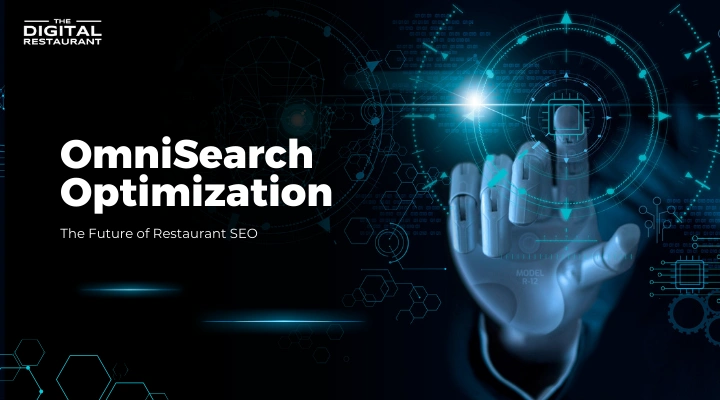
Why Schema Matters for Restaurants
Schema is the behind-the-scenes language that tells AI and search engines exactly what your restaurant offers — from your cuisine type to your menu, reviews, events, and reservation links.
Proper schema implementation helps you:
- Appear in AI Overviews and conversational search results
- Display rich snippets (menus, hours, reviews) in Google Search
- Strengthen your brand’s entity connection (Brand → Location → Menu → Reviews)
- Improve click-through rates by enhancing visual SERP results
“AI search rewards clarity. Schema is how you make your restaurant data clear to machines — and visible to customers.”
Essential Schema Types For Restaurants
| Schema Type | Purpose | Example |
|---|---|---|
| Restaurant | Identifies business type & location details | @type: Restaurant |
| Menu / MenuSection / MenuItem | Exposes food items for AI & Google | @type: Menu, MenuItem |
| AggregateRating / Review | Displays star ratings & review snippets | @type: AggregateRating |
| FAQPage | Adds expandable FAQs in SERPs | @type: FAQPage |
| BreadcrumbList | Helps Google understand site structure | @type: BreadcrumbList |
| LocalBusiness | Defines NAP data for each store | @type: LocalBusiness |
| Event (optional) | For specials or seasonal events | @type: Event |
Optimizing for AI Search Engines (ChatGPT, Gemini, Perplexity, Copilot)
- Ensure strong brand entity presence
- Use consistent naming (Brand + City) across all directories, pages, and schema.
- Interlink your main brand and location pages using structured “sameAs” relationships.
- Answer-rich content
- Include concise FAQ sections for each location (“Do you offer gluten-free options?”, “Do you have parking?”).
- AI systems pull direct answers from well-structured content.
- Keep menu items readable
- Avoid PDF-only menus. Use HTML or structured menu schema.
- This enables AI systems to understand dishes, categories, and prices.
- Leverage reviews as entity reinforcement
- High-quality, recent reviews across Google, Yelp, and TripAdvisor build trust signals used by LLMs.
- Update freshness signals
- Schema, menus, and GBP posts should update regularly.
- AI platforms prioritize active, verifiable data sources.
⚙️ How NGAZE.AI Handles Schema & AI Visibility
“With NGAZE.AI, every restaurant location automatically includes structured data — menus, reviews, and business details — ensuring your brand is recognized by Google and AI search engines alike.”
NGAZE Schema & AI Optimization Features:
- 🧩 Auto-generated Restaurant, Menu, and FAQ schema per location
- 🔗 Entity linking between brand and location pages
- 🤖 AI-readiness checks for Google, Bing, ChatGPT, and Perplexity
- 🕒 Monthly schema refresh (every 30 days)
- 📈 Visibility reports showing AI/LLM mention share
💡 Pro tip: Use NGAZE’s AI Visibility Dashboard to see where your restaurant brand is being referenced across Google AI Overviews, ChatGPT, and Perplexity answers — and how often your competitors appear.
Key Takeaways
- Let NGAZE.AI automate markup and tracking across every location.
- Schema markup is the foundation of AI search visibility.
- Maintain consistent entity relationships across all locations.
- Replace PDFs with structured menus and FAQs.
- Update schema regularly to reinforce freshness.
Conclusion: Measuring Results & Scaling Success
Local SEO isn’t just about rankings — it’s about real-world impact: more calls, direction requests, online orders, and repeat customers.
For multi-location restaurant brands, the real success comes from building a repeatable system that delivers measurable results at every location.
“The goal isn’t to just rank higher — it’s to drive measurable actions that fill tables, boost takeout, and grow your brand.”
Measure What Matters
Track these metrics monthly across all your stores:
| Metric | Why It Matters | Where To Track |
|---|---|---|
| Google Calls & Direction Requests | Indicates real-world conversions | Google Business Performance |
| Website Clicks & Online Orders | Measures digital engagement | GA4 / POS / Online Ordering |
| Review Volume & Average Rating | Reflects visibility & brand trust | NGAZE Dashboard / GBP |
| Keyword Rankings by Location | Tracks local visibility growth | NGAZE SEO Reports / GSC |
| Profile Activity (Posts, Photos) | Correlates with freshness & engagement | GBP Insights |
| Traffic to Location Pages | Validates on-page SEO performance | GA4 / Search Console |
From Manual Tasks to a Measurable System
Many restaurant groups manage SEO reactively — fixing listings, posting updates, or responding to reviews as time allows.
But when you systemize and measure your local presence, it transforms into a predictable growth engine:
- Every location runs the same proven process.
- Data drives continuous improvement.
- ROI is visible at both local and corporate levels.
That’s the difference between doing SEO and running a scalable restaurant marketing operation.
How NGAZE.AI Helps You Measure and Scale
“With NGAZE.AI, you get a unified dashboard showing each restaurant’s visibility, engagement, and customer sentiment — all mapped back to actual orders and calls.”
Key Metrics NGAZE Tracks Automatically:
- 📞 Google calls, direction requests, and profile clicks
- 📊 Local keyword rankings across cities and zip codes
- ⭐ Review growth, sentiment analysis, and response time
- 🗺️ GBP activity trends (posts, photos, freshness)
- 💵 Order and conversion attribution from SEO traffic
Final Takeaway
If you’re managing multiple restaurant locations, consistency, automation, and measurement are your greatest advantages. This 2026 Local SEO Playbook gives you the strategy — and NGAZE.AI gives you the system to execute it at scale.
Start today.
Run a free Multi-Location SEO Audit and see how your brand ranks across Google, Maps, and AI Search.
Get Your Audit →
If managing marketing for your restaurant locations feels complicated, The Digital Restaurant can help. We combine proven restaurant SEO strategies with done-for-you Restaurant SEO services to increase your visibility, traffic, and sales across all locations.
NGAZE.AI platform makes managing multiple locations a doddle. Request a demo to learn more.
Next Steps:
- Schedule a free 30-minute consultation with one of our marketing experts to develop a customized marketing strategy for your restaurant.
Don’t let your competitors claim a bigger slice of the market. Take action today and watch your restaurant’s success soar!
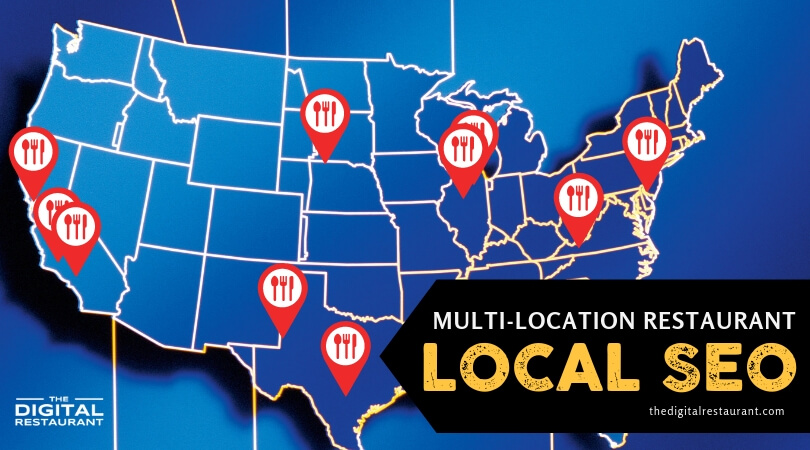
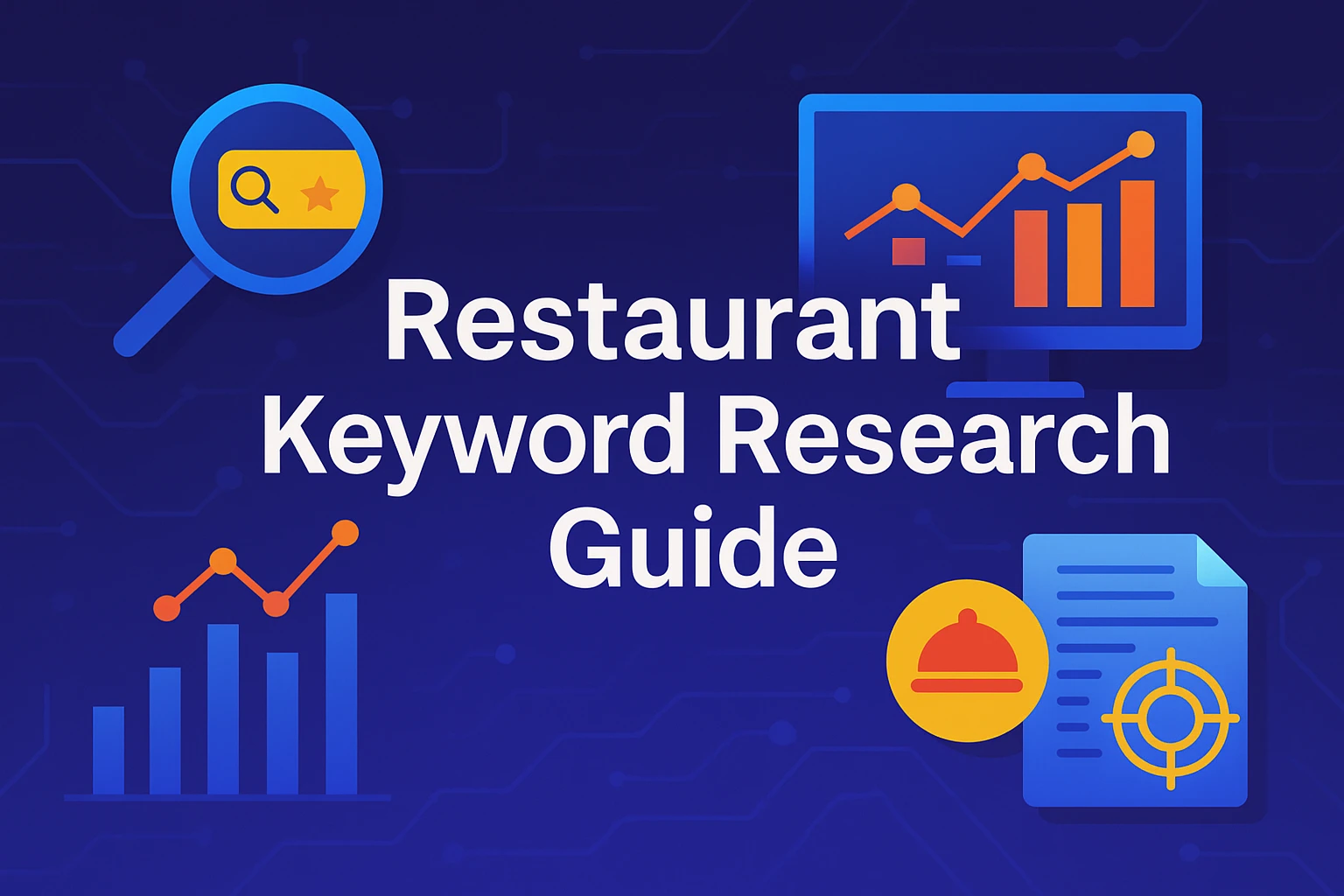






Leave a Reply